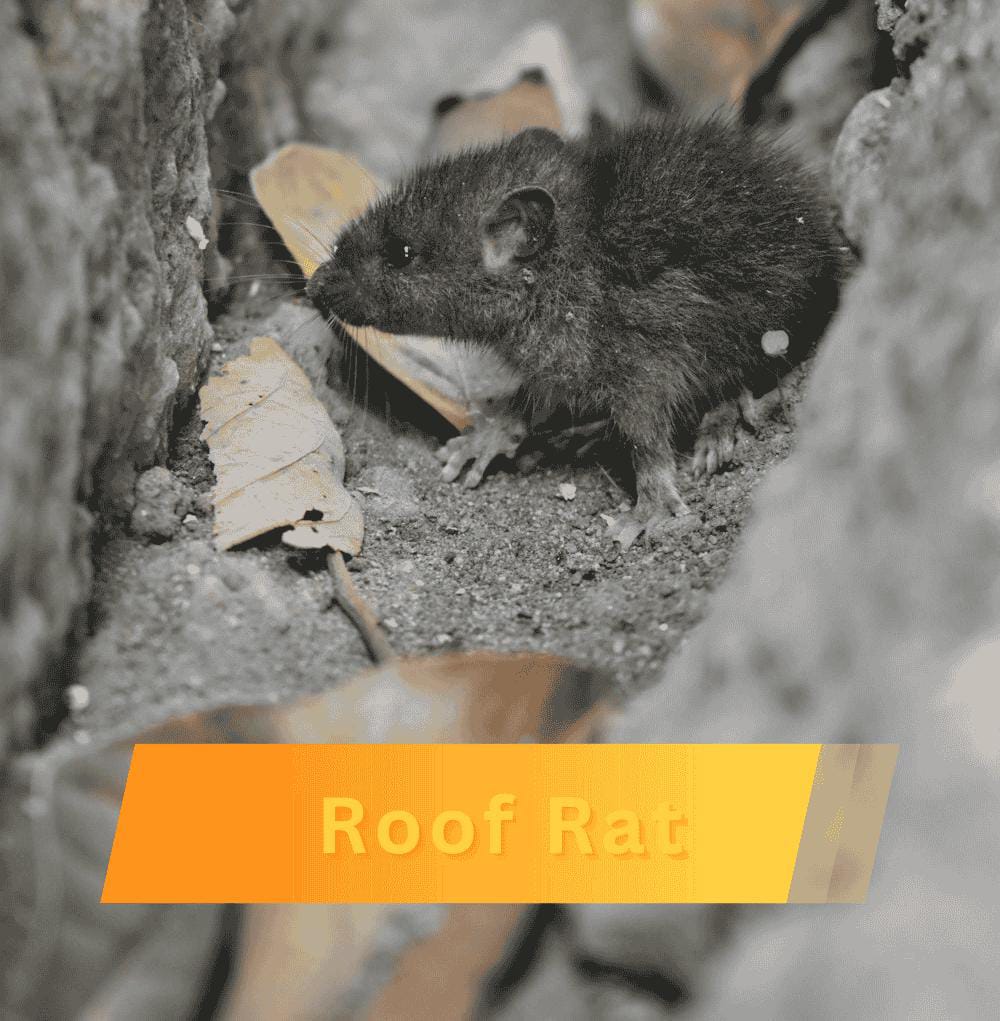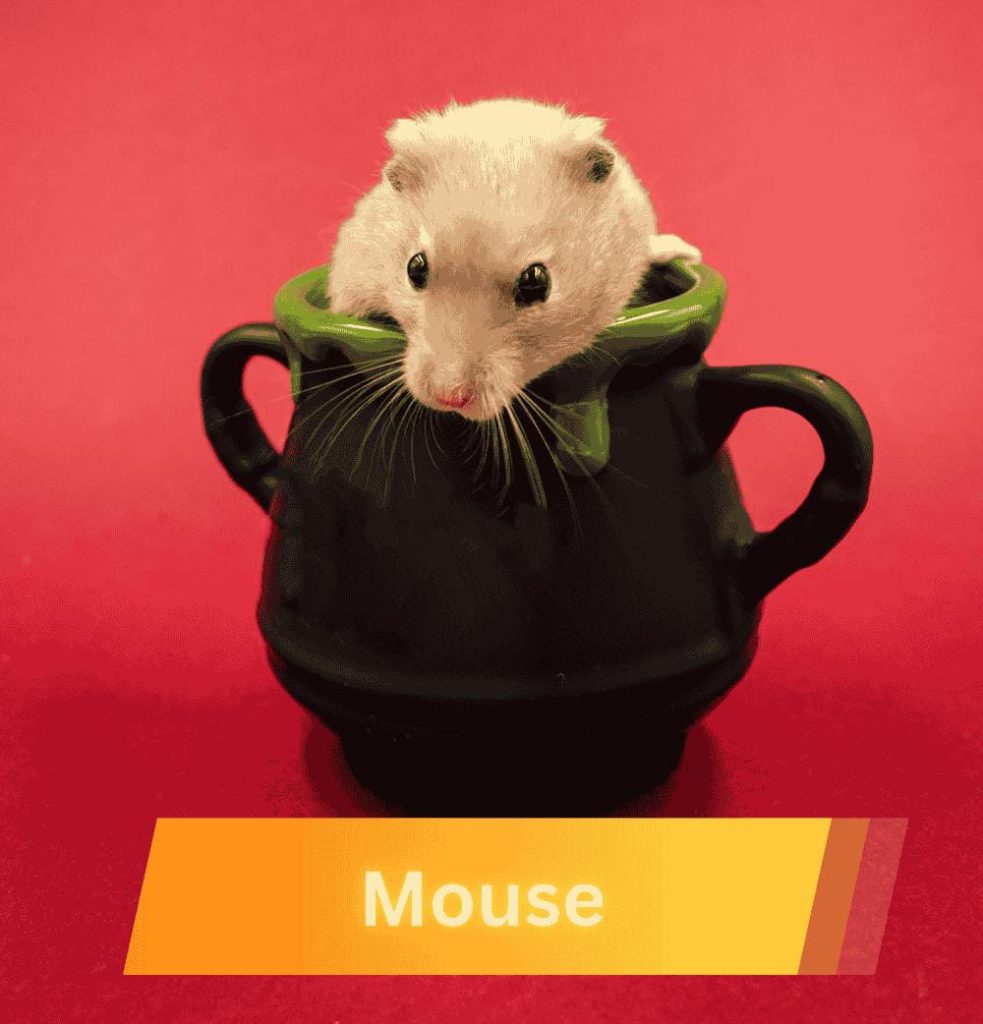Roof Rat vs Mouse differentiate with our comprehensive guide. When dealing with rodents in areas like Central Texas, homeowners often find themselves wondering if they’re facing a roof rat or mouse problem. These pests are especially common during spring or after torrential downpours, as they seek shelter indoors. While both species have the ability to adapt to human environments, their characteristics differ. A roof rat, also called a black rat or ship rat, tends to inhabit elevated areas like attics, roof eaves, or upstairs rooms, whereas the house mouse prefers ground-level spaces like the garage or walls nearby.

Roof Rat vs Mouse-The Answer
Homeowners often face roof rat or mouse infestations, especially after heavy rain or in spring. Roof rats prefer elevated areas like attics, while mice dwell in lower areas like garages. Roof rats are larger, excellent climbers, and leave behind bite marks and pellets in hidden areas. Mice are smaller, more social, and leave tiny droppings. Identifying the species is crucial for effective pest control. Both rodents pose health risks, and quick action is necessary to prevent damage. Professional help is recommended for safe and efficient removal.
Detecting an infestation can be tricky, but certain clues help. Check for gnaw marks, scratching sounds in walls, rat holes or little brown pellets of poop left behind. While both rodents have long tails and a pair of incisor teeth in the upper jaw, the roof rat is sleeker, with short legs that make it an excellent climber. Signs like droppings in elevated areas point to a roof rat problem, while hidden nests indoors hint at a mouse infestation. Their nesting activity not only causes significant damage but also poses risks to health, making it essential to quickly determine which species is infesting your property.
Table of Contents

Roof Rat vs Mouse
How to Identify a Roof Rat
Physical Traits of Roof Rats
- Larger than mice, with a slender body that can grow up to 16 inches, including the tail.
- Typically have brown or black fur, smooth texture, a pointed nose, and large eyes.
- Excellent climbers, often found in high places like attics, rafters, and rooftops.
Entry Points and Access to Homes
- Can enter homes through trees, fences, and PVC pipes, making them opportunistic.
Nesting and Behavior
- Known to hoard food, leaving behind piles of seeds, nuts, and fruits.
Nocturnal Feeding
- Feed at night, making them hard to spot until fresh signs of damage are found.
Property Damage and Health Risks
- Prefer areas with dense vegetation for cover while searching for food, often in kitchens or pantries, sometimes near cockroaches.
Signs of Roof Rat Infestation
- Gnaw marks on wooden surfaces, PVC, and wires.
- Shredding materials like paper, fabric, and fiberglass for nesting.
- Pelleted droppings found in hidden spots like cabinets, basements, or garages.
Roof Rat
Diet
Roof rats rely on their ability to climb and access food in high places, often chewing through packaging or eating fruit and grain.
Habits
These rodents are known for their climbing ability, building nests in high-up spots like attics or roofs. They also gnaw on various materials like wires and cables.
Droppings
Roof rats leave droppings as a key sign of their presence, often scattered in areas where they roam, posing a health risk due to the diseases they carry.
Breeding
With the ability to reproduce rapidly, roof rats can have up to 5 to 10 litters per year, leading to quick infestations if not controlled.

How to Identify a House Mouse
Physical Traits
- Small size, typically 3-4 inches long (excluding their tails).
- Coat colors are generally brown or gray, sometimes dark or black.
- Leave behind tiny droppings (eighth-inch to quarter-inch in size).
- Nocturnal and social creatures, living in colonies and establishing territories.
Entry Points and Access to Homes
- Skilled climbers, able to scale baseboards and slip through small holes and cracks.
- Gnaw marks found on packaging, cabinetry, and PVC piping.
- Strong climbing skills allow them to explore rafters and elevated spots.
Nesting and Behavior
- Nests made from fabric, paper, cardboard, or insulation.
- Produce a distinct musky odor.
- Curious creatures that explore new areas for nesting and feeding.
Property Damage and Health Risks
- Gnawing on surfaces and wiring, posing a fire hazard.
- Feces and urine can contaminate countertops, shelves, and packaging.
- Can carry harmful bacteria and viruses such as salmonella, leptospirosis, and hantavirus.
Signs of Mouse Infestation
- Quick and effective pest control may require professional expertise.
- Professionals use specialized techniques to eliminate pack rats for customized, long-term control.
Mouse
Diet
These mice tend to frequent the same food sources, making them easier to bait. While they don’t require water, they will drink around 3 mL if it’s available. They usually live on the ground and make nests in burrows. Soft materials or shredded paper are often used by them to construct nests, typically placed in hidden areas near food sources.
Breeding
Like all rodents, house mice are born blind, hairless, and completely reliant on their mother for nourishment and protection. House mice generally have litters ranging from 4 to 16 babies, with 7 to 8 litres annually. They reach sexual maturity in approximately 8 to 12 weeks.
Habits
House mice are nocturnal creatures that are social and territorial, often displaying bolder behavior than rats. Their curiosity leads them to explore unfamiliar areas, making them easier to trap. They are skilled climbers and can squeeze through small openings to access areas in your home you may not expect.
Droppings
House mouse droppings are around 3 to 8 mm in length, often scattered randomly. Their shape is granular, and they are black in color. These droppings are typically found near nesting areas.
How to Seal House from Mice
To prevent mice from entering your home, seal small gaps around windows, doors, vents, faucets, water pipes, and flooring with caulk, steel wool, or wire mesh. Pay attention to areas like screens and foundation gaps. Use mothballs near exterior doors to deter rodents. If needed, consult professional pest control for full protection and follow-up visits.Our rodent pest control treatments can find the source of sneaky rats and quickly stop them in their tracks. Whenever you mouse droppings, contact us for help!
Removing Roof Rats from Your Home
Dealing with roof rats can be challenging due to their climbing ability and larger size compared to common mice. These unsanitary pests pose health risks, especially to children and pets, due to their droppings and strong odor. To tackle the infestation, secure food sources and entry points. While baits, traps, and poison are common solutions, it’s important to prioritize safety for your family. Consider humane methods like live trapping, or consult a professional for efficient, safe removal.Our rodent pest control treatments can find the source of sneaky rats and quickly stop them in their tracks. Whenever you find roof rat droppings indoors, contact us for help!
FAQ’s
How can you tell the difference between a mouse and a roof rat?
Mouse are noticeably smaller than roof rats, with body lengths ranging from 2.5-4 inches compared to the 6-8 inches of roof rats. This size difference makes it easy to tell them apart, especially when observed together.
Are roof rats harmful?
Roof rats are a serious health threat, contaminating food and water with droppings and urine that can cause food poisoning and spread bacteria and viruses. They also host parasites like fleas, ticks, and worms, endangering both humans and pets. Seal openings and protect food to prevent infestations.
Is it a mouse or rat in my ceiling?
If you hear scratching or squeaking overhead, it could be rats or mice in your ceiling or attic, seeking shelter and food. Rats are larger, leaving gnaw marks on wood and drywall, while mice are smaller and quieter. Loud noises at night, chewed materials, and damage near wiring often signal rats. Act quickly to prevent further harm.